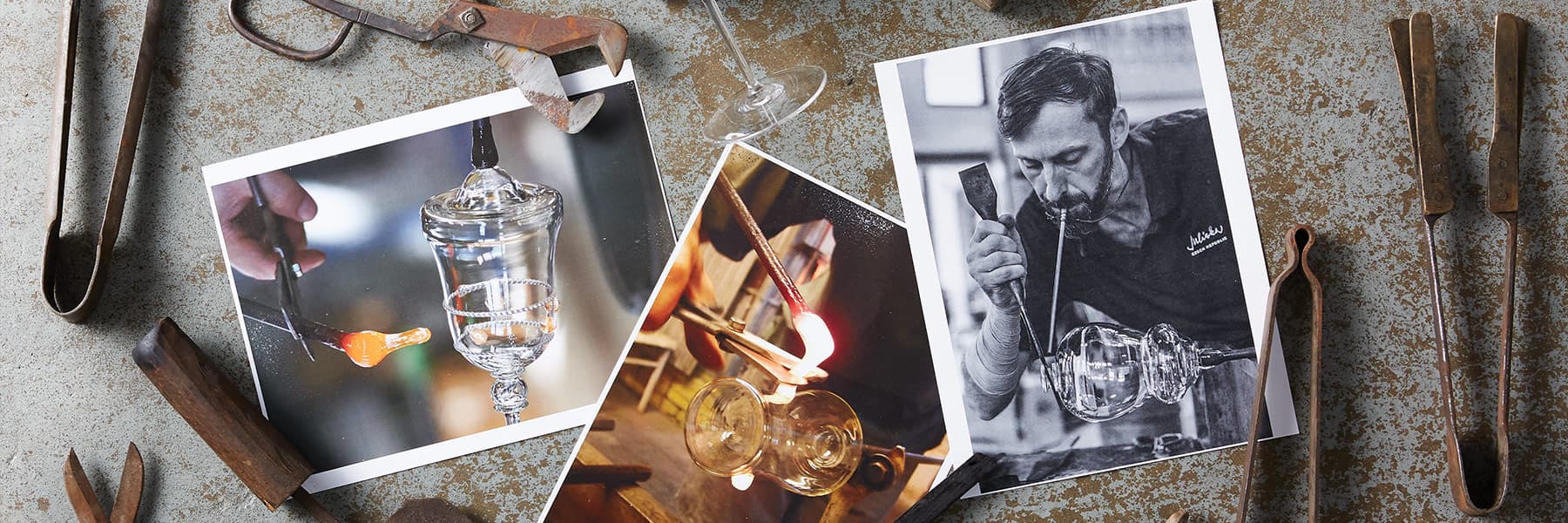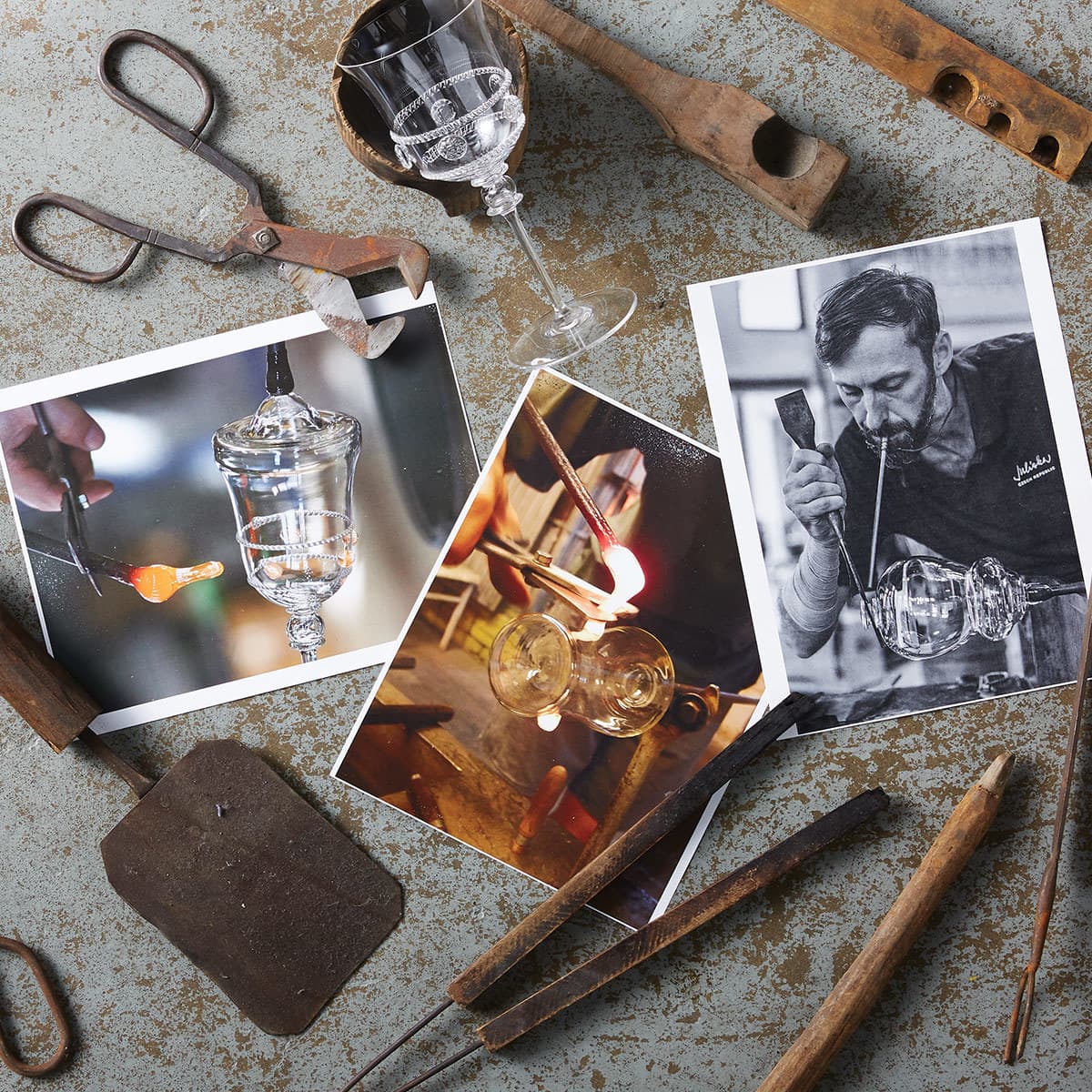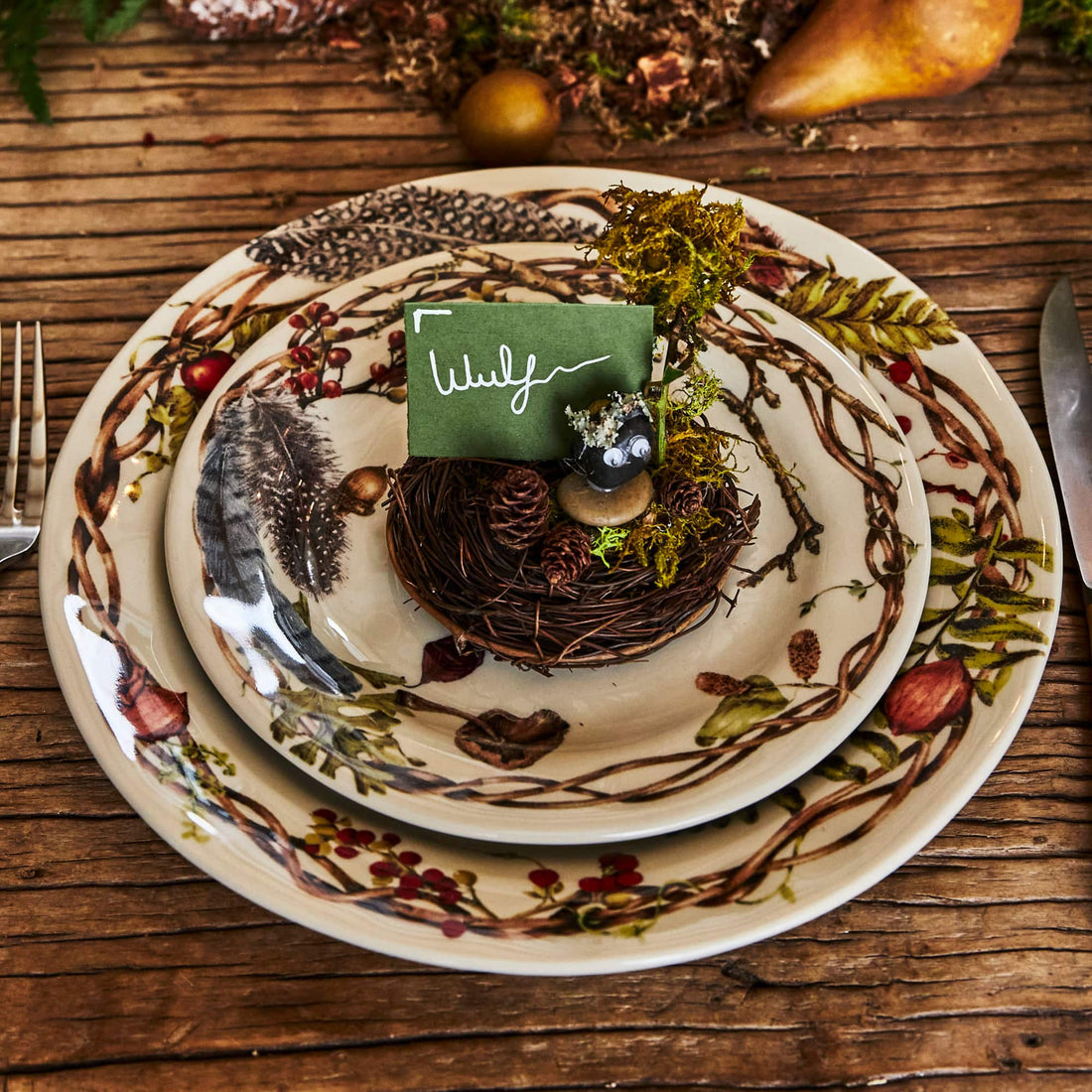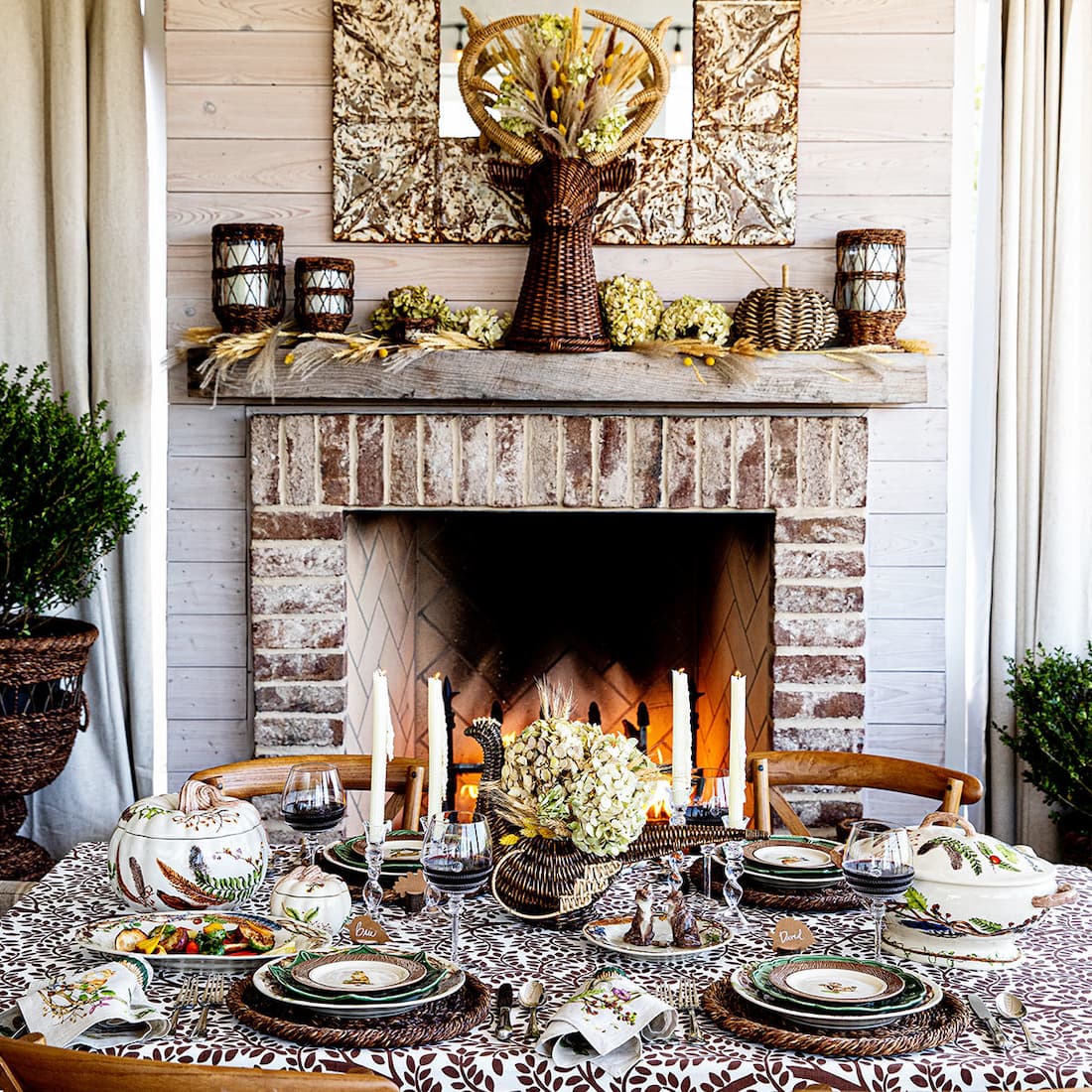The Heart Of Bohemia
You may have wondered, what exactly is Bohemian Glass? The story begins hundreds of years ago in the hillside villages just outside of Prague, the capital city of the Czech Republic, which was once called the Kingdom of Bohemia (hence the name). Artisans from various regions, including what would become Germany and Venice, shared their various tools and techniques with each other, culminating in a unique aesthetic that became known as Bohemian Glass.
10 years of training are required for a glass artisan to become a Glass Master. Instead of an official school, there is a long tradition of artisans traveling the world and apprenticing under different masters, to learn and perfect as many techniques as they can. If they are exceptionally skilled and show an art for nuance and design, they too, can one day, become Glass Masters.
Bohemian Glass is blown in teams of two or three with the Glass Master acting as the lead glass sculptor. The desired characteristics of Bohemian glass are that it be light and thin so that is an unexpected pleasure to drink from. It takes a great deal of practice to blow glass this fine and thin without tearing it.
Although the glass looks rather fragile, it is actually quite durable. Bohemian glass enters into a furnace several times during the shape-forming and decorating phases, so the glass breaks down and refuses at a molecular level; this reinforces the glass making it strong and durable, which is why Bohemian Glass is dishwasher safe.
Inspired by the intricate beauty and unique craftsmanship of traditional Bohemian Glass, Juliska was born. With this rich legacy in mind, you’ll notice that each piece of Juliska’s bohemian glass is individually, hand signed as a validation of it quality, authenticity and heritage.
The Barkeep’s Guide to Juliska’s Bohemian Glassware
Bubbles, darling - Coupes and Flutes
If you’re a traditionalist with a penchant for bubbly, reach for a classic coupe glass, the Baroque era beauty that Marie Antoinette was sipping from in her gilded palaces. A coupe glass evokes vintage glamour and romantic opulence, also making it perfect for craft cocktails “up” — which are shaken and not served on ice. The champagne flute was designed years later to optimize the effervescent rise of the bubbles that Dom Pérignon famously proclaimed to his fellow monks, “Come quickly, I’m tasting the stars!” For those that adore that brilliant sparkle and a heightened splash of drama, the flute is for you.
Glorious Goblets
The unsung heroes of glassware, multi-tasking goblets are perfectly sized to accommodate practically everything, from iced tea to smoothies to frozen margaritas. When setting a beautiful table, goblets create instant visual impact with their pretty pedestals and sculptural form. Never ones to skip dessert, goblets are sublime for individual servings of sundaes and frozen treats. Cheers to the sweet life!

I’m an old-fashioned kind of girl - Double Old Fashioneds
Not just for serving its eponymous cocktail, the Double Old Fashioned glass is also known as a lowball glass and is ideal for any cocktail (or mocktail) served on the rocks, like a Negroni, Margarita or freshly squeezed juice. Designed with a low profile and heavier base for muddling ingredients, the sturdy DOF stands up to firm grasps, hefty pours and serving libations preferred neat.
Highball Glasses
Whether it’s a tall drink of water you’re after or a mixed cocktail, the highball glass is designed for large portions poured over ice. Perfect for a spirit and a mixer or a mixer sans spirit, such as mojitos, spritzers and party punch. Tip: they also moonlight as pretty vases!
Because, Bacchus - Wine for Every Body
The Greek God of wine, Bacchus, never met a vintage he didn’t love. We’re in the same boat, thus offering stemless, stemmed, light-bodied and full-bodied wine glasses, created for varietals and gatherings of all sorts.
Full-bodied vs light-bodied white - White wine glasses have smaller bowls and a narrower opening than red wine glasses to preserve their more delicate and subtle aromas.
If you prefer crisp and clean white wines (which often have a lower alcohol percentage) on a hot summer’s day or paired with salads, fish, chicken or spicy fare, then you’ll look for a light-bodied glass to hold your Rieslings, Sauvignon Blancs and rosés.
For richer pairings (hello, Thanksgiving or Alfredo pasta), a slightly larger glass is optimal to develop the more complex aromas of full-bodied whites like Chardonnays, Rhônes and White Riojas.
Full-bodied vs light-bodied red - In general, light-bodied reds have an alcohol content of less than 12.5%, like Pinot Noir, Grenache and Barbera. The light-bodied wine glass is also perfect for serving chilled reds when the temperatures rise (think summer BBQ).
Full-bodied reds have a higher alcohol content (13.5% or more), more complex flavors and a richer mouthfeel, like Cabernet Sauvignon, Syrah and Merlot. Your old-world special vintages fall under this category, needing time to breathe before you swirl, sip and savor them to their fullest potential.
Shop Bohemian Glass













